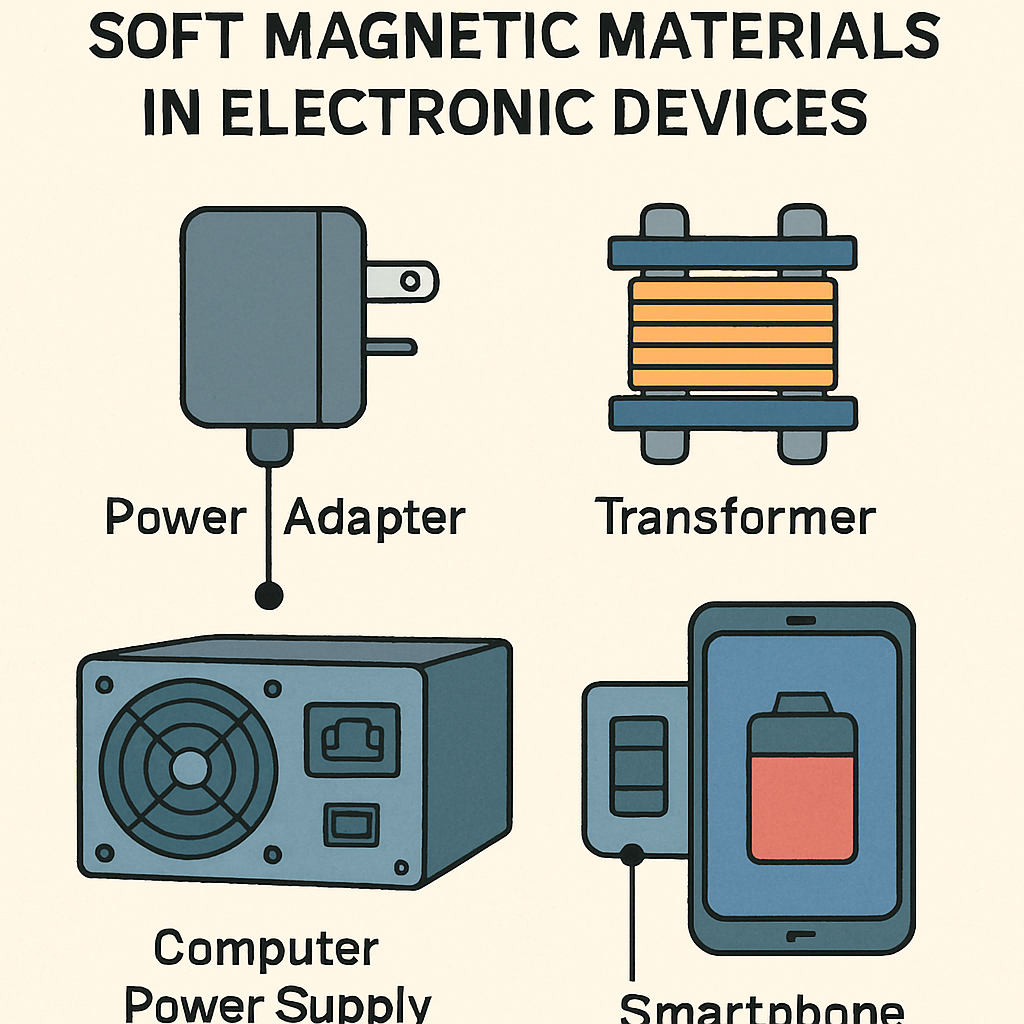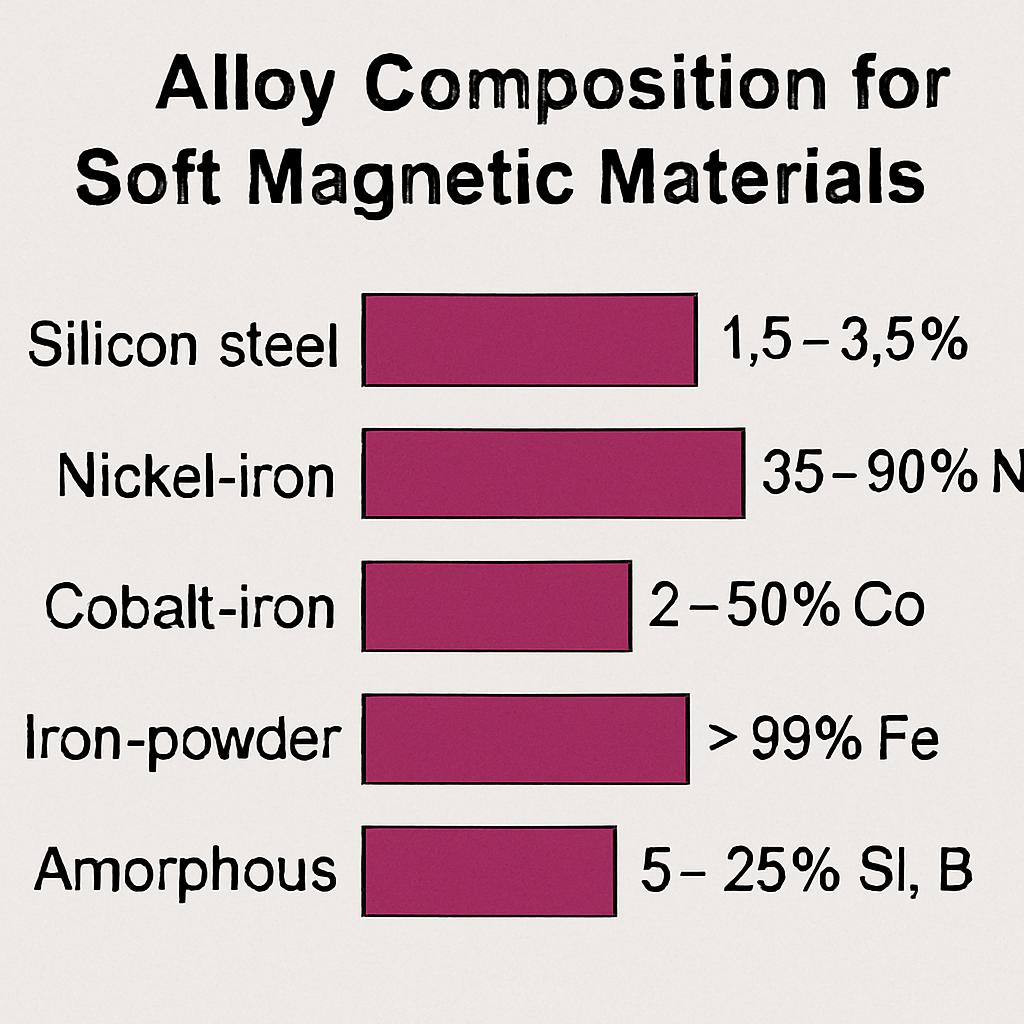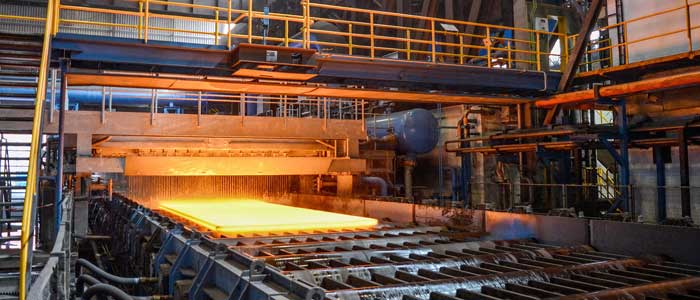In the world of material science, understanding the properties and applications of different materials is crucial. One such category of materials that plays a significant role in various technological applications is soft magnetic materials. But what exactly are soft magnetic materials, and why are they important? This article aims to provide a clear definition and understanding of these materials and their significance.
Soft magnetic materials are a type of electromagnetic material that exhibits high permeability and low coercivity. These properties make them ideal for applications where the material needs to magnetize and demagnetize quickly and efficiently. In simpler terms, soft magnetic materials can easily switch their magnetic state, making them highly responsive to external magnetic fields.
Key Characteristics
- High Permeability: This refers to the material’s ability to support the formation of a magnetic field within itself. High permeability means that soft magnetic materials can easily channel magnetic lines of force, making them efficient for electromagnetic applications.
- Low Coercivity: Coercivity is the measure of the material’s resistance to becoming demagnetized. Soft magnetic materials have low coercivity, which means they require less energy to change their magnetic state, making them energy-efficient.
- Low Residual Magnetism: After the removal of an external magnetic field, soft magnetic materials exhibit little to no residual magnetism, allowing for quick response times in changing magnetic fields.
Types of Soft Magnetic Materials
Ferromagnetic Materials
Ferromagnetic materials are the most common type of soft magnetic materials. They include metals like iron, nickel, and cobalt, which have high magnetic permeability. These materials are used extensively in transformers, inductors, and other electrical components.
Alloys
Soft magnetic materials can also be made from alloys, which are combinations of different metals. Common soft magnetic alloys include:
- Silicon Steel: Adding silicon to steel improves its magnetic properties, making it more efficient and reducing energy losses.
- Permalloy: This nickel-iron alloy has excellent magnetic permeability and is often used in magnetic shielding and recording heads.
Amorphous and Nanocrystalline Materials
These materials are produced using rapid cooling techniques that prevent the formation of a crystalline structure, resulting in unique magnetic properties. They offer higher efficiency and lower energy loss, making them suitable for cutting-edge applications in electronics.
Applications of Soft Magnetic Materials
Transformers and Inductors
In electrical engineering, transformers and inductors are vital components that rely on soft magnetic materials for their operation. The high permeability of these materials allows for efficient transfer and conversion of electrical energy.
Electric Motors
Soft magnetic materials are used in the cores of electric motors to enhance their efficiency. The low coercivity of these materials means that the motors consume less energy, making them more sustainable.
Magnetic Shields
In environments where sensitive electronic equipment is used, soft magnetic materials serve as magnetic shields. They protect equipment from external magnetic interference, ensuring accurate and reliable performance.
Importance in Material Science
The study of soft magnetic materials is a crucial aspect of material science. Their unique properties make them indispensable in the design and development of modern electronic devices. Understanding these materials allows scientists and engineers to innovate and create more efficient technologies that drive progress in various industries.
Advancements in Technology
With ongoing research and development, advancements in soft magnetic materials are leading to more efficient and compact devices. From improving the efficiency of renewable energy systems to enhancing data storage solutions, these materials are at the forefront of technological innovation.
Environmental Impact
The use of energy-efficient soft magnetic materials contributes to reducing the carbon footprint of electronic devices. By minimizing energy losses, these materials help create more sustainable technologies that benefit the environment.
Conclusion
Soft magnetic materials are a cornerstone of modern technology, with their high permeability and low coercivity making them ideal for a wide range of applications. From electric motors to transformers, these materials enable the efficient functioning of essential components in various industries. Understanding the definition and properties of soft magnetic materials is key to leveraging their potential in advancing material science and technology. As research continues to evolve, the role of these materials will only become more significant in shaping the future of sustainable and innovative solutions.
In summary, soft magnetic materials are not only fascinating in their properties but also vital in driving technological progress. By delving into the world of soft magnets, we gain insight into how material science can revolutionize industries and contribute to a more sustainable future.









